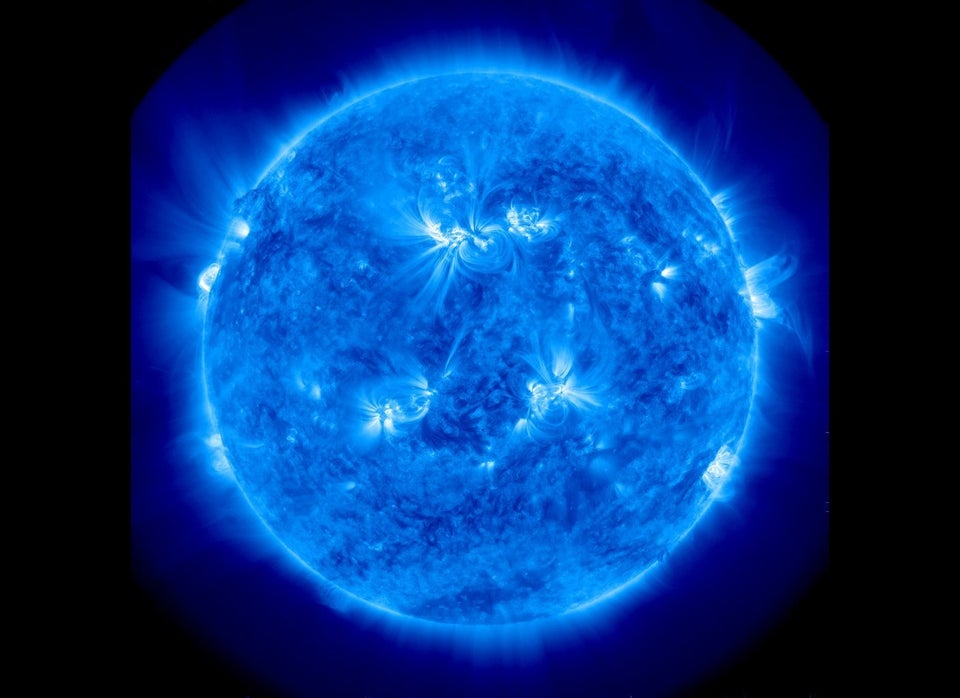
By Sean Treacy
A mysterious burst of charged particles from space hit Earth at some point from 774 to 775 C.E. Scientists know this thanks to a spike in radioactive carbon found in ancient tree rings. What they didn't know was the source of the burst.
Now, a team of physicists argues that our own sun was the culprit. The sun normally emits bursts of charged particles called coronal mass ejections (lower left of image), but they either never strike the Earth or are too weak to do much damage.
Theoretically, however, the sun could release a burst strong enough to explain the tree rings, the researchers will report in an upcoming issue of Geophysical Research Letters. They estimate that such a blast would have been about 70 times as powerful as that which knocked out power for millions in Quebec in 1989. It could also have been about 20 times as powerful as the blast behind the solar storm of 1859, which disrupted telegraph systems in North America and Europe.
Our sun is probably capable of such a huge blast, given that many distant sunlike stars have been spotted releasing flares that big, if not bigger, the scientists say, though the blast would still have been too small to cause massive extinctions.
See more ScienceShots.
ScienceNOW, the daily online news service of the journal Science
